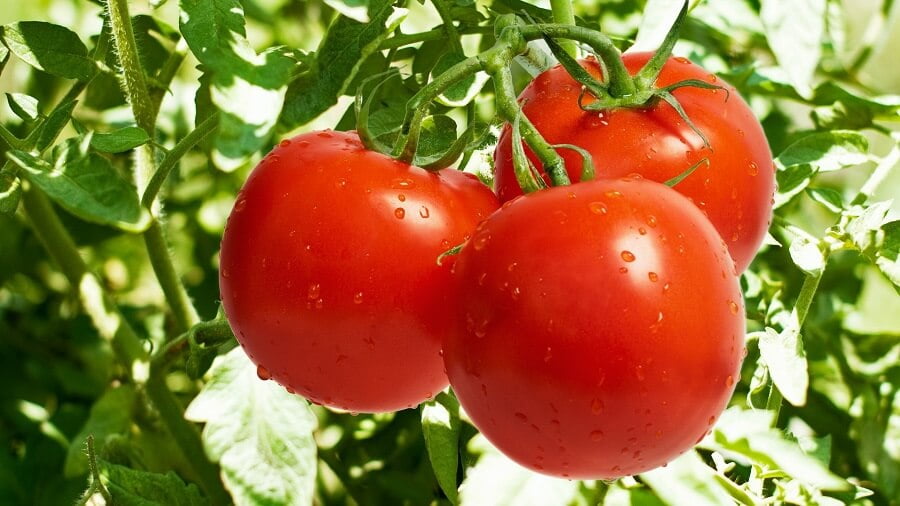Are you tired of losing your potato crops to the dreaded potato blight? Fear not, as there is a solution to this devastating disease.
By planting blight-resistant potato varieties, you can increase your crop yields and maintain a healthy gardening system.
Potato blight is caused by spores of the Phytophthora infestans fungus, which can ruin entire crops and infect nearby plants.
But with the right prevention and mitigation techniques, you can combat this disease and protect your potato harvest.
By rotating crops, using new seed potatoes, and planting blight-resistant varieties, you can significantly reduce the risk of potato blight in your garden.
So why not try these blight-resistant varieties and enjoy a healthy and bountiful potato harvest?
Quick Takeaways
- Potato blight is caused by spores of Phytophthora infestans fungus and can ruin entire crops.
- Prevention and mitigation tactics include using new seed potatoes, rotating crops, and choosing blight-resistant varieties.
- Blight-resistant potato varieties such as Setanta, Sarpo Blue Danube, Cara, Nicola, Robinta, Molly Magic, and Acoustic have a more robust defense against blight and can increase crop yields.
- Choosing blight-resistant potatoes can help struggling gardeners produce viable crops and provide more food in the pantry while maintaining a healthy gardening system.
Causes and Symptoms
If you’re worried about potato blight, it’s important to know that it’s caused by fungal spore transmission. The spores of Phytophthora infestans fungus can travel through air and infect soils miles away. This can have a devastating impact on potato crop yield.
The symptoms of potato blight include dark brown circular patches on foliage, shriveled and black leaves, and brown spots on stems. Tubers can also be affected, with dark brown or black spots, sunken areas, and reddish-brown flesh. If left untreated, the entire plant can wilt and rot.
It’s important to monitor your potato plants for signs of blight, especially during warm and wet weather conditions when blight can spread rapidly from leaves into soil. Blight can hide on potatoes stored for use as seed, so it’s best to use new seed potatoes and rotate crops to prevent the spread of blight.
Planting blight-resistant varieties can also help combat potato blight and increase crop yields. Early-season potatoes have less chance of blight than late-season crops, so it’s important to choose the right time to plant. By taking these preventative measures, you can reduce the impact of potato blight on your harvest and ensure a successful crop.
Can Including Potato Plants in Composting Help Combat Potato Blight?
Potato plants serve as best composting materials for combating potato blight. By including them in compost piles, the plants contribute essential nutrients back into the soil, reducing the risk of blight recurrence. These plants contain potassium, phosphorus, and nitrogen, enriching the compost. Optimal composting practices, including turning the pile regularly, will help maximize the benefits of potato plants in preventing potato blight.
Prevention and Mitigation
To prevent and mitigate the spread of potato blight, you should take precautions like rotating your crops, using new seed potatoes, and planting early-season potatoes. Early planting gives your plants a better chance of avoiding blight, as the disease tends to affect late-season crops more frequently.
Additionally, managing water around your plants is crucial. Watering your plants early in the day and mounding the rows helps to deter excessive moisture and prevent the spread of blight.
It’s important to monitor your potatoes for signs of blight and remove infected foliage immediately. Choosing certified seed potatoes from blight-resistant varieties and rotating your crops are the most beneficial ways to combat blight. Experts suggest at least three to four years of gap between potato plantings in the same garden area.
By using blight-resistant varieties, you can increase your crop yields while maintaining a healthy gardening system.
Benefits of Blight-Resistant Varieties
By choosing blight-resistant potatoes, you can enjoy a more abundant and longer-lasting harvest, while also contributing to a healthier garden ecosystem. Here are some advantages of using blight-resistant potato varieties:
- These potatoes have a more robust defense against the Phytophthora infestans and Alternaria solani fungus, which means fewer chances of losing your entire crop.
- Blight-resistant potatoes can be harvested earlier in the season, which means less time for the fungus to spread and infect your plants.
- They provide better yields of fully mature tubers that remain in good condition longer during storage, which means you can enjoy fresh potatoes for a longer time.
- By using blight-resistant varieties, you can help struggling gardeners produce viable crops and provide more food in the pantry.
- A garden with less blight helps nearby crops from infestation because fewer spores will be airborne and spread.
As with anything, there are some drawbacks to using blight-resistant potato varieties. They may not be as visually appealing as other varieties, and some may have different textures and flavors. However, these minor drawbacks are far outweighed by the benefits of using blight-resistant potatoes.
They help you grow a healthier and more abundant crop while also contributing to the overall health of your garden ecosystem.
Top Blight-Resistant Potato Varieties
You can increase your chances of a successful potato harvest with these top blight-resistant options. Choosing the right potato variety can make all the difference in combating potato blight. Not only will you have a more abundant harvest, but you’ll also be helping nearby crops by reducing the spread of airborne spores.
Take a look at the table below for some of the best blight-resistant potato varieties available. These potatoes are not only resistant to blight but also offer unique flavors and textures for all kinds of cooking methods. Remember to follow growing tips, such as rotating crops and using new seed potatoes, to ensure the healthiest plants possible. With these varieties and some cooking suggestions, you’ll be on your way to a bountiful harvest in no time.
| Potato Variety | Flavor | Texture | Best Cooking Method |
|---|---|---|---|
| Setanta | Slightly sweet, nutty | Firm | Roasting, frying, mashing |
| Sarpo Blue Danube | Mild, nutty | Dry, waxy | Boiling, baking, frying |
| Cara | Sweet, buttery | Waxy | Boiling, roasting, salads |
| Nicola | Buttery | Waxy | Boiling, baking, frying |
Remember to choose blight-resistant potato varieties, rotate your crops, and use new seed potatoes to combat potato blight. With these growing tips and cooking suggestions, you’ll be able to enjoy a bountiful harvest of delicious potatoes.
Frequently Asked Questions
What are some alternative methods to combat potato blight besides using blight-resistant varieties?
To combat potato blight, you can try crop rotation by planting different crops in the same area each year. You can also apply fungicides to prevent the spread of the disease. However, using blight-resistant varieties is still the most effective method.
Can traditional potato varieties be modified to become blight-resistant?
Breeding techniques have been used for centuries to develop new potato varieties with better disease resistance. Genetic modification is a newer tool, but it has shown promise in creating blight-resistant potatoes.
How do blight-resistant varieties affect the taste and texture of the potatoes?
Blight-resistant potato varieties have no significant impact on flavor or texture. They can be used in various cooking applications, from boiling to baking. Choosing them ensures a healthy harvest and reduces the risk of crop loss due to blight.
Are there any disadvantages to using blight-resistant varieties?
Blight-resistant potatoes have pros and cons. While they can prevent the spread of blight and increase crop yields, they may not be as widely available and can be more expensive than traditional varieties.
How do blight-resistant varieties compare in terms of yield and growth compared to traditional varieties?
Blight-resistant potato varieties have comparable yields to traditional varieties while providing greater disease resistance efficacy. They offer a more abundant harvest of mature tubers that remain in good condition longer during storage, providing a safe and reliable food source.
Conclusion
So, you’re thinking of planting potatoes, but you’re worried about potato blight ruining your crop? Don’t worry, because there are blight-resistant varieties that you can choose from.
By planting Setanta, Sarpo Blue Danube, Cara, Nicola, Robinta, Molly Magic, or Acoustic, you can protect your potatoes from the devastating effects of Phytophthora infestans, and increase your crop yields at the same time. These varieties are not only resistant to potato blight, but they’re also easy to grow and maintain.
By following the best practices for preventing and mitigating potato blight, you can ensure a healthy and bountiful harvest. So go ahead and plant those potatoes, and enjoy the satisfaction of growing your own delicious and blight-resistant crop.









